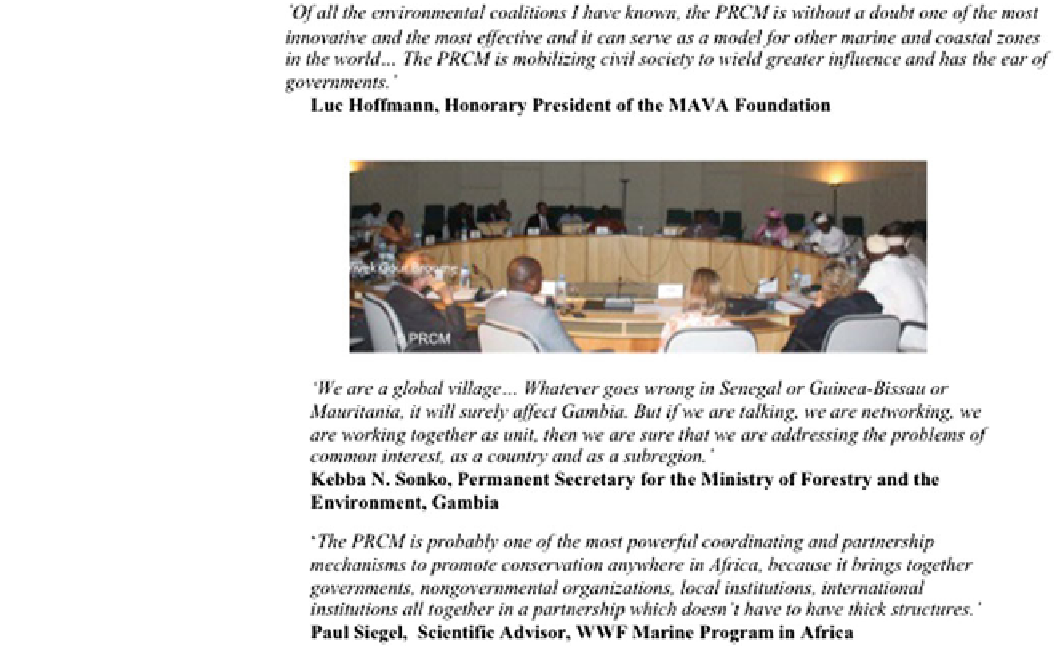Environmental Engineering Reference
In-Depth Information
Fig. 4
Testimonies from PRCM
actors
the power between local and national/regional agents,
something which local actors value. In the words of
Augusta Henriques, Secretary General of the national NGO
Tiniguena and winner of the Ramsar Award:
the expertise of the Senegalese community of Dasselamé
Serer, where awareness for the conservation of mangroves
is well established and where reforestation activities are part
of a well-established annual program. Exchanges were also
facilitated between Guinea and Senegal to demonstrate and
share the experience of producing solar salt.
The challenge is to invest in several stakeholders and institu-
tions at every level. But above all, the importance of
strengthening the grassroots level must not be overlooked, since
it is the communities that anchor the process in the field.
Indeed, the sum of the PRCM's field experience represents
enough potential influence to propose solutions at the ecore-
gional level. In other words, solutions must spring from local
and national situations and experiences pooled together in an
ecoregional perspective.
Challenges in the PRCM Networked Governance
Model
However, networked governance is not without challenges.
One of the greatest challenges to governing in networks
includes the presence of differing and competing goals,
since networks often gather stakeholders whose interests
simultaneously overlap and clash. Because the Atlantic
coast of Africa has a high concentration of population and
industries, the need for mangrove habitat conservation is
often in conflict with the need to encourage rapid growth.
Competition is further exacerbated by the fact that short-
term subsistence needs are best addressed by high-revenue
generating activities such as mangrove cutting while con-
servation priorities and actions generate benefits in the long
term (UNEP
2007
). The fact that the PRCM partnership
includes both non-governmental and governmental organi-
zations means that even conservation goals do not always
align.
The WAMI project invested in building the capacity of
local communities in mangrove restoration and in alterna-
tive livelihoods to facilitate the conversion away from the
economic activity of harvesting mangrove timber. A total of
30 individuals including 14 women received training in
mangrove restoration, solar salt production and the use of
improved fish smoking ovens (Borner and Guissé
2010
).
While the project planned to facilitate peer learning
exchanges at the regional level, budget constraints and
differences in language and climate allowed only exchanges
between neighboring countries (Borner and Guissé
2010
;
WAMI
2010
).
For example, reciprocal visits allowed the Gambian
communities of Buram and Bali Mandinka to benefit from
Unequal
capacity
and
poor
national
and
local

Search WWH ::

Custom Search